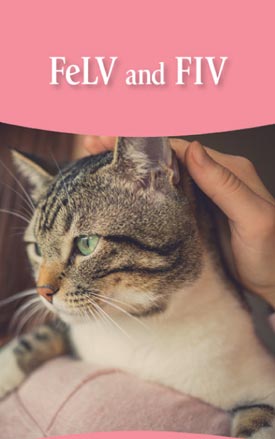
March 01, 2020
AAFP updates guidelines on feline retroviruses
Feline leukemia virus and feline immunodeficiency virus are found in cats worldwide, according to the American Association of Feline Practitioners, but the spread of these viruses can be minimized through education, testing, and vaccination.
 In January, the AAFP released updated Feline Retrovirus Testing and Management Guidelines online and in the Journal of Feline Medicine and Surgery. The association aims to provide the most current information about feline retrovirus infections so veterinary practitioners may optimize the care and management of cats.
In January, the AAFP released updated Feline Retrovirus Testing and Management Guidelines online and in the Journal of Feline Medicine and Surgery. The association aims to provide the most current information about feline retrovirus infections so veterinary practitioners may optimize the care and management of cats.
The guidelines represent a consensus of current information compiled by an international panel of researchers and practitioners. The document is an update of the 2008 AAFP Retrovirus Testing and Management Guidelines.
According to the guidelines: “Although vaccines are available for FeLV in many countries and for FIV in some countries, identification of infected cats remains an important factor for preventing new infections. The retrovirus status of every cat at risk of infection should be known. Cats should be tested as soon as possible after they are acquired, following exposure to an infected cat or a cat of unknown infection status, prior to vaccination against FeLV or FIV, and whenever clinical illness occurs. It might not be possible to determine a cat’s infection status based on testing at a single point in time; repeat testing using different methods could be required. Although FeLV and FIV infections can be associated with clinical disease, some infected cats, especially those infected with FIV, can live for many years with good quality of life.”
The guidelines cover the pathogenesis and outcomes of infection, diagnosis and prevention of retrovirus infections, considerations for multicat environments, and management of retrovirus-infected cats. A brochure for cat owners describes FIV and FeLV, signs of infection, diagnosis, prevention, and management of infected cats.
“The newly updated guidelines for 2020 describe a two-tier testing system for FeLV and FIV,” said Dr. Julie Levy, co-chair of the guidelines and a professor of shelter medicine at the University of Florida, in comments to JAVMA News. “One approach is ‘one and done,’ in which a reliable point-of-care combination test is performed for FeLV antigen and FIV antibody in cats with relatively low risk. A cat with a negative result is likely to be uninfected. A cat with a positive result is likely to be infected, but it may also be a false positive.
“If resources permit, a second-stage confirmatory tier of testing can be performed.”
Dr. Levy’s test of choice is a polymerase chain reaction–based test because it is highly sensitive and detects a different part of the virus than the point-of-care tests do. In the case of FeLV, she uses a newly offered laboratory test bundle that includes a highly sensitive microtiter plate test for FeLV p27 antigen and a newly developed quantitative PCR assay. Not only does this test combination confirm infection, Dr. Levy said, but it can also determine whether a cat has regressive or progressive infection, which provides information about prognosis, early death, and risk of shedding virus to other cats.
“Recent research has shown that cats with FIV infection can safely live with uninfected cats if they get along and do not fight, with very little chance of transmission,” Dr. Levy said. “Cats with FeLV, however, should live alone or with other infected cats since the risk of transmission of FeLV is higher. Cats with FeLV and FIV are increasingly managed by adoption, necessitating strong pet owner education and support from their new veterinarians.”
The guidelines provide the following summary points:
- Retrovirus infections remain common and important diseases of cats worldwide.
- Ongoing research into viral pathogenesis and improvements in diagnostic testing continue to refine the state of knowledge about these viruses.
- Practitioners are advised to take advantage of current peer-reviewed published reviews and recommendations for testing and management of cats in different populations.